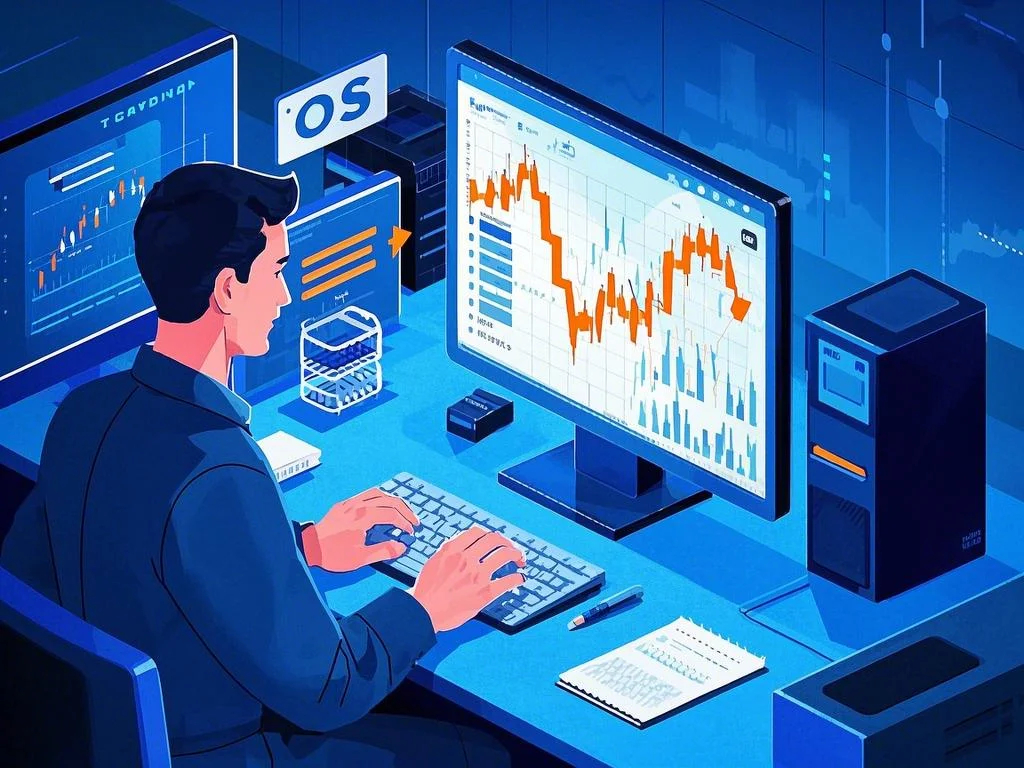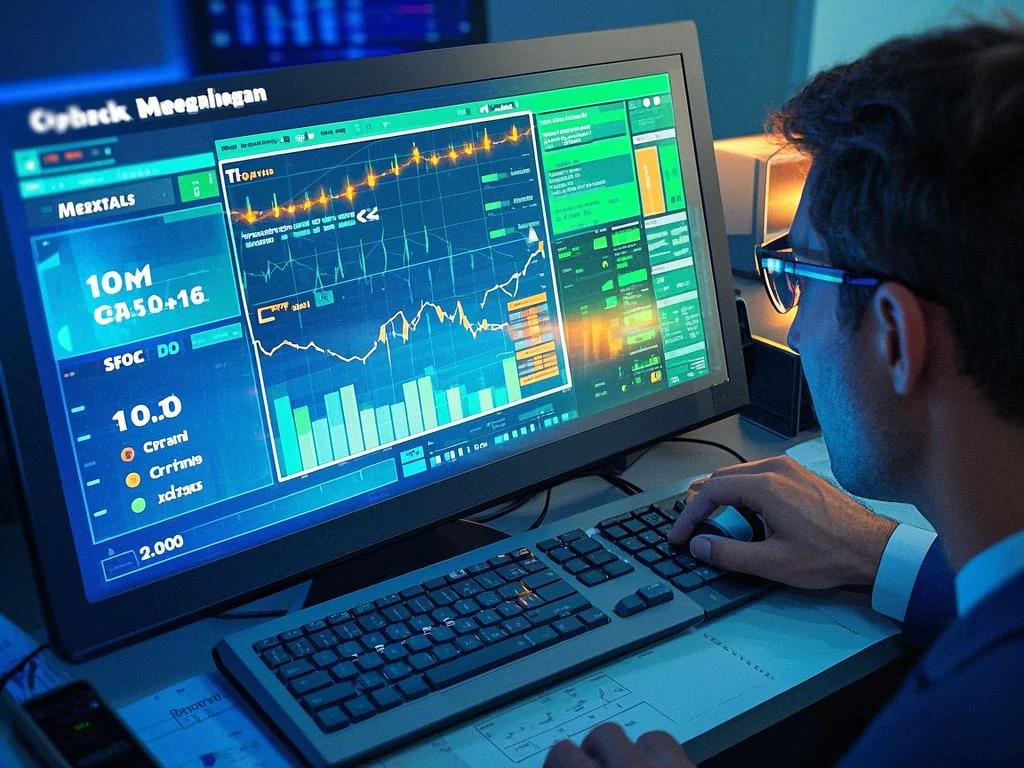Forex day trading is a popular strategy among traders who seek to capitalize on short-term price movements in the foreign exchange market. Unlike long-term investing, which involves holding positions for weeks, months, or even years, day trading requires opening and closing trades within the same day. This approach allows traders to avoid overnight risks and take advantage of market volatility. However, forex day trading is not without its challenges. It requires discipline, a solid understanding of the market, and effective forex trading strategies. In this article, we’ll explore what forex day trading is, how it works, and how you can get started with this exciting but demanding trading style.
What is Forex Day Trading?
Forex day trading involves buying and selling currency pairs within a single trading day, with the goal of profiting from short-term price fluctuations. Day traders typically focus on highly liquid currency pairs, such as EUR/USD, GBP/USD, and USD/JPY, which tend to have tighter spreads and more predictable price movements. The forex market’s 24-hour nature allows day traders to operate at almost any time, although the most active trading sessions—such as the London and New York sessions—offer the best opportunities.
Day traders rely heavily on technical analysis, using tools like candlestick charts, moving averages, and oscillators to identify entry and exit points. They also pay close attention to economic news and events that can cause sudden price movements. While forex day trading can be highly profitable, it requires quick decision-making, emotional discipline, and a well-defined trading plan. Without these, traders risk making impulsive decisions that can lead to significant losses.

Key Tools and Strategies for Forex Day Trading
To succeed in forex day trading, you need the right tools and strategies. Here are some of the most essential components:
Technical Analysis
Technical analysis is the backbone of forex day trading. It involves studying price charts and using indicators to identify trends, support and resistance levels, and potential entry and exit points. Common technical indicators used by day traders include moving averages, Relative Strength Index (RSI), Bollinger Bands, and Fibonacci retracements. These tools help traders make informed decisions based on historical price data and market patterns.
For example, a day trader might use a moving average crossover strategy, where they buy a currency pair when a short-term moving average crosses above a long-term moving average, indicating an upward trend. Conversely, they might sell when the short-term moving average crosses below the long-term moving average, signaling a downward trend. By combining multiple indicators, traders can increase the accuracy of their predictions and improve their chances of success.
Risk Management
Risk management is crucial in forex day trading, as the market’s volatility can lead to significant losses if not managed properly. One of the most important risk management tools is the stop-loss order, which automatically closes a trade when the price reaches a predetermined level. This helps limit losses and protect your trading capital.
Another key aspect of risk management is position sizing, which involves determining how much of your capital to allocate to each trade. A common rule of thumb is to risk no more than 1-2% of your trading capital on a single trade. This ensures that even a series of losing trades won’t wipe out your account. Additionally, avoid overtrading, as this can lead to increased transaction costs and emotional burnout.
Economic Calendar
Economic news and events can have a significant impact on currency prices, making them an essential consideration for day traders. An economic calendar provides information on upcoming events, such as interest rate decisions, employment reports, and GDP data, which can cause sudden price movements. By staying informed about these events, you can anticipate market volatility and adjust your trading strategy accordingly.
For example, if the U.S. Federal Reserve announces an interest rate hike, the U.S. dollar (USD) is likely to strengthen against other currencies. A day trader might use this information to enter a long position on USD pairs before the announcement and exit shortly after the news is released. However, trading around high-impact news events can be risky, as prices can move unpredictably. It’s important to use caution and set tight stop-loss orders when trading during these times.
How to Get Started with Forex Day Trading
If you’re interested in forex day trading, here are some steps to help you get started:
Choose a Reliable Broker
Your choice of broker is critical to your success as a day trader. Look for a broker that offers tight spreads, low commissions, and fast execution speeds. Additionally, ensure the broker is regulated by a reputable authority, such as the U.S. Commodity Futures Trading Commission (CFTC) or the UK Financial Conduct Authority (FCA). A reliable broker will provide a secure trading environment and access to the tools and resources you need to succeed.
Set Up a Trading Plan
A trading plan is a blueprint for your trading activities, outlining your goals, strategies, risk management rules, and criteria for entering and exiting trades. Your plan should be based on thorough research and backtesting, and it should be flexible enough to adapt to changing market conditions. Stick to your plan and avoid making impulsive decisions based on emotions or market noise.
Practice with a Demo Account
Before risking real money, practice your trading strategies on a demo account. A demo account allows you to trade with virtual funds in a simulated market environment, giving you the opportunity to refine your skills and build confidence. Use this time to test different strategies, analyze your performance, and identify areas for improvement.
Common Mistakes to Avoid
Forex day trading is challenging, and even experienced traders can make mistakes. Here are some common pitfalls to watch out for:
Overtrading
Overtrading is a common mistake among day traders, especially when they’re eager to make profits. Trading too frequently can lead to increased transaction costs and emotional burnout. Focus on high-quality trades that align with your strategy, rather than trying to capitalize on every opportunity.
Ignoring Risk Management
Failing to manage risk is one of the quickest ways to lose money in forex day trading. Always use stop-loss orders and adhere to proper position sizing to protect your capital. Remember, preserving your capital is just as important as making profits.
Letting Emotions Drive Decisions
Emotions like fear and greed can cloud your judgment and lead to impulsive decisions. Stick to your trading plan and avoid making trades based on emotions. If you find yourself feeling stressed or overwhelmed, take a break and reassess your strategy.
Final Thoughts
Forex day trading offers exciting opportunities for profit, but it requires discipline, knowledge, and a well-defined strategy. By using technical analysis, practicing sound risk management, and staying informed about market events, you can increase your chances of success in this fast-paced trading style. Whether you’re a beginner or an experienced trader, the key to success lies in continuous learning and adaptation.
With the right tools, such as forex trading apps, and a commitment to mastering currency trading, you can navigate the complexities of the forex market and achieve your financial goals. Remember, forex day trading is not a get-rich-quick scheme—it takes time, effort, and perseverance to become a consistently profitable trader. With the right approach, you can turn forex day trading into a rewarding and fulfilling endeavor.
